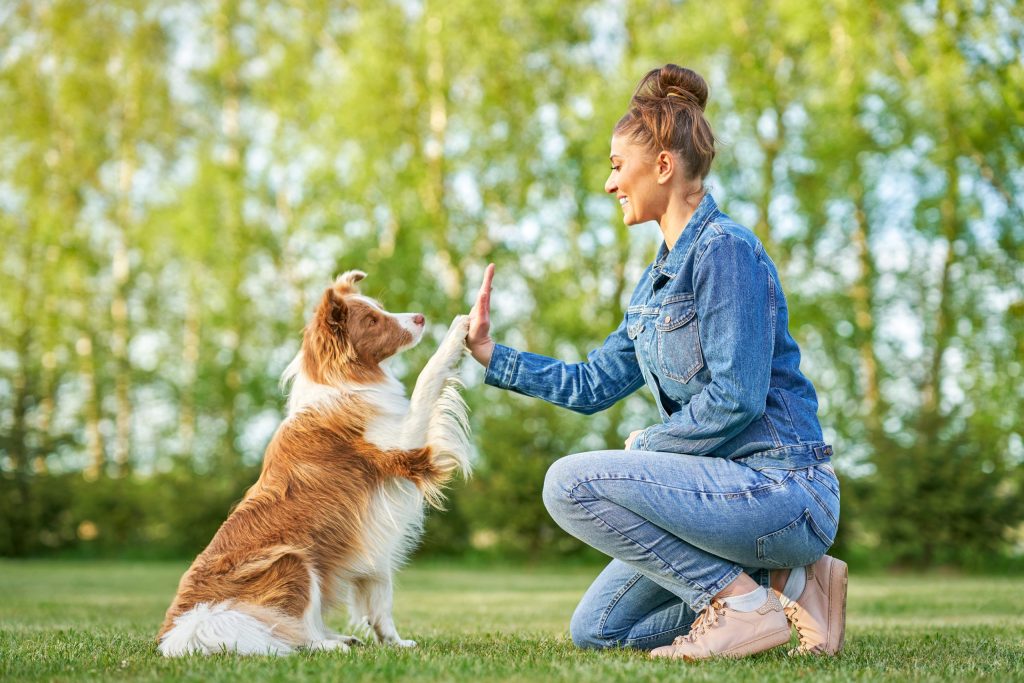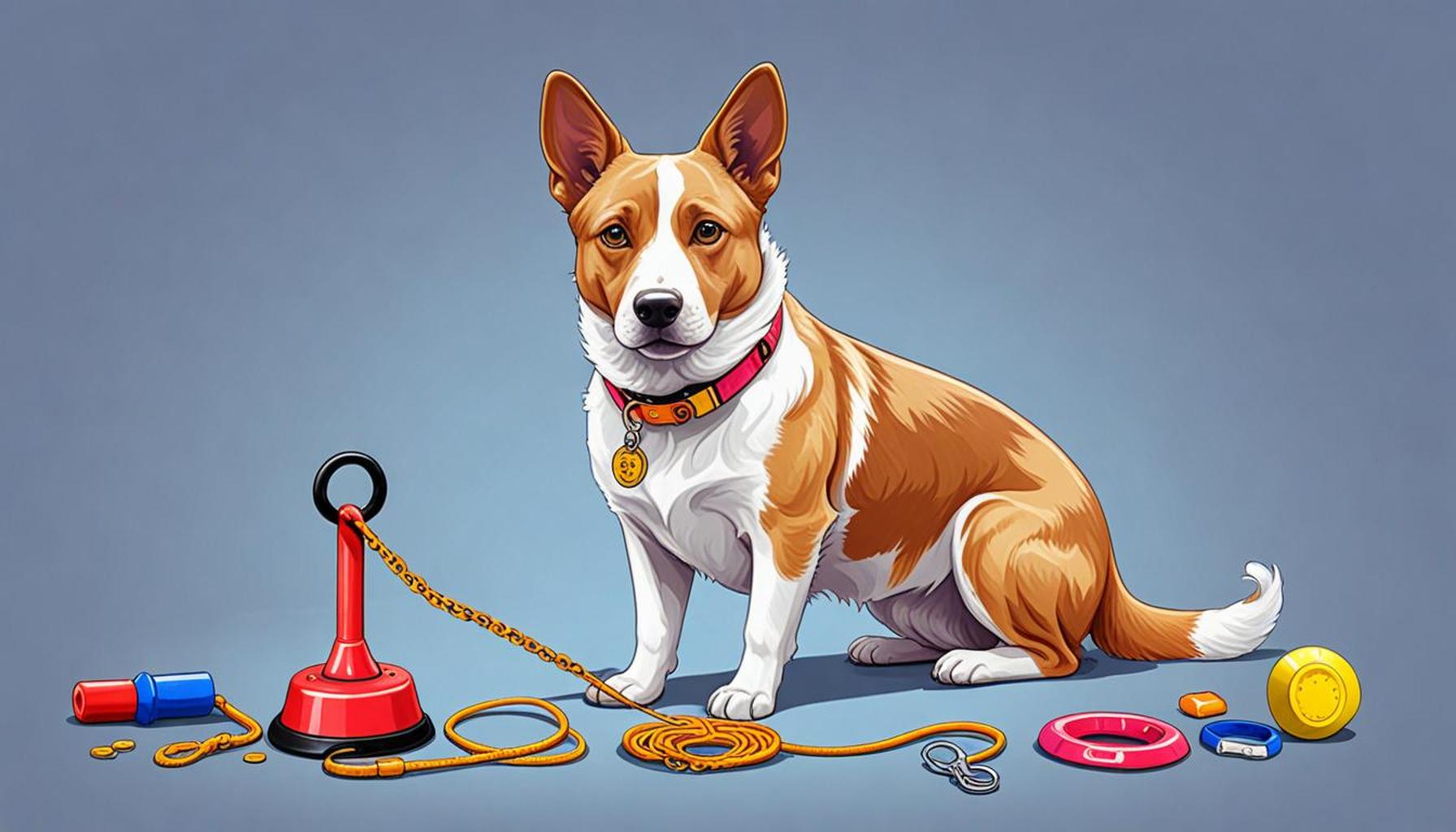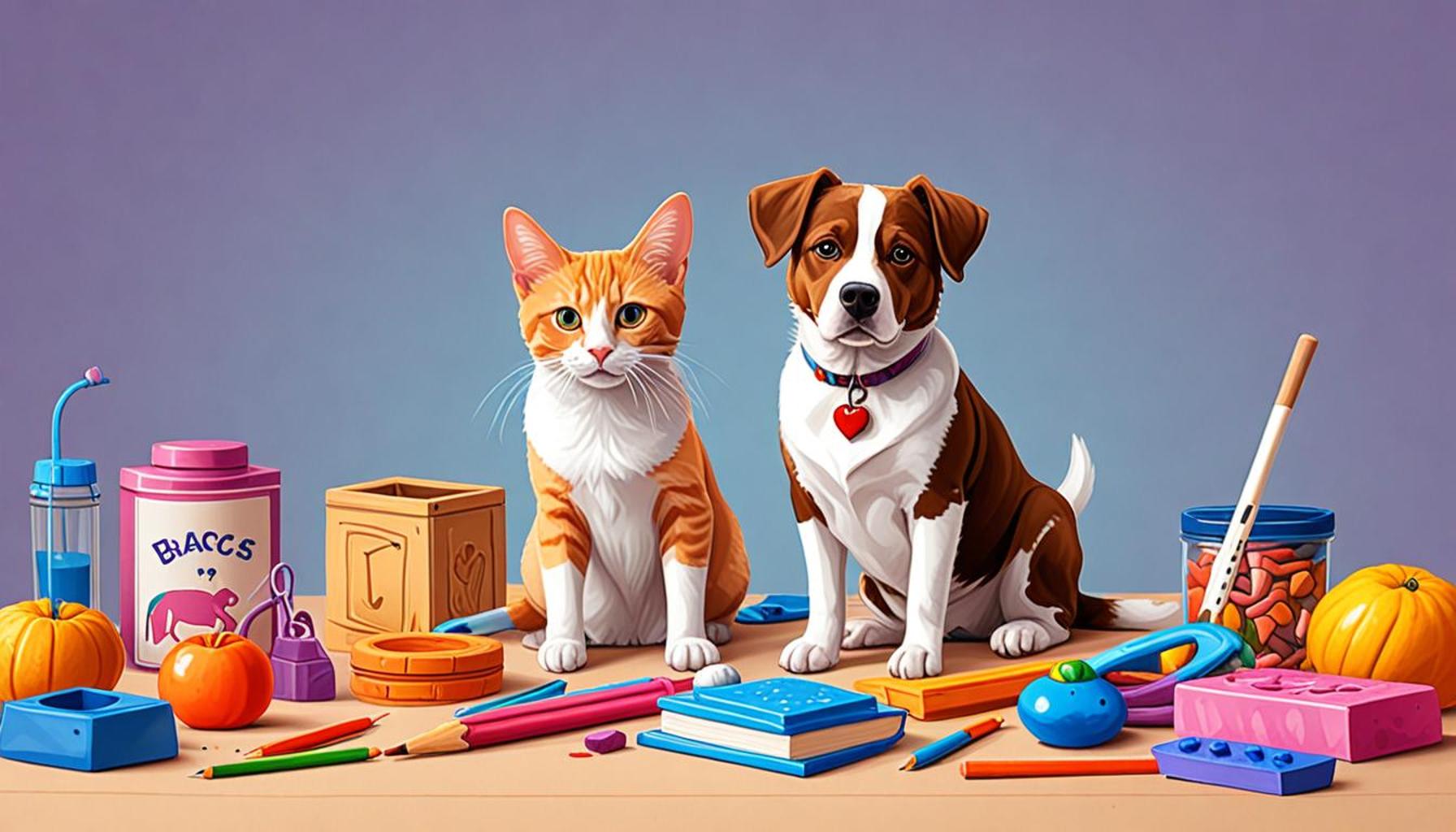The Importance of Environmental Enrichment in Pet Training

Understanding Environmental Enrichment
Many pet owners underestimate how environmental enrichment plays a pivotal role in pet training. Providing a stimulating environment can significantly enhance a pet’s quality of life and improve their behavior. Nigerian pet owners are increasingly discovering that keeping pets mentally engaged is just as important as physical exercise. With urbanization on the rise and pets often limited to smaller living spaces, the need for effective methods to engage pets has never been more pressing.
What is Environmental Enrichment?
Environmental enrichment refers to various strategies aimed at enhancing the living conditions of pets. It encompasses a wide range of activities that can be easily integrated into daily routines. For instance,
- Providing varied activities that cater to different senses. This might include allowing a dog to explore different textures through various surfaces—such as grass, sand, or gravel—during walks or introducing cats to interactive scratching posts with different materials.
- Using toys that stimulate mental and physical challenges. Puzzle feeders that dispense treats reward pets for problem-solving, while chew toys can keep dogs and cats engaged and promote dental health.
- Incorporating social interactions and training routines. Regular sessions of basic obedience training or positive reinforcement games can make a significant difference in a pet’s behavior, especially in busy urban areas where pets may not have as much opportunity for natural exploration.
These methods create an engaging atmosphere, allowing pets to express natural behaviors. Without it, pets can experience boredom and stress, leading to undesirable behaviors like excessive barking, scratching, or even aggression towards other animals or humans. In Nigeria’s bustling cities, it becomes crucial to adapt these techniques to fit into everyday life.
Why is it Essential?
Several compelling reasons highlight the necessity of environmental enrichment for successful pet training:
- Enhances Learning: A mentally stimulated pet is more likely to absorb training and respond positively. Activities that encourage learning can turn everyday experiences into valuable training opportunities, such as incorporating local sounds or sights into their playtime.
- Reduces Behavioral Issues: Engaged pets exhibit fewer signs of anxiety and aggression. By providing enough stimulation, owners can mitigate behavioral issues that arise from pent-up energy, such as destructive chewing or hyperactivity, which can be particularly problematic for pets living in confined spaces.
- Strengthens Bonding: Activities promoting interaction foster a deeper connection between pets and their owners. Involving family members, especially children, in these activities can also teach responsibility and compassion while creating lasting memories.
As Nigerian cities evolve and lifestyles change, the need for innovative training approaches becomes evident. The awareness surrounding environmental enrichment is growing, paving the way for more vibrant and well-adjusted pets. By prioritizing mental stimulation alongside physical exercise, pet owners can enrich their pets’ lives, leading to happier households and communities.

SEE ALSO: Click here to read another article
The Role of Environmental Enrichment in Training Success
In the realm of pet training, environmental enrichment serves not merely as an additional element but as a cornerstone for building a well-rounded and happy pet. While basic obedience commands and tricks are crucial, the significance of mental stimulation through diverse experiences cannot be overstated. These enriching activities not only foster learning but also aid in behavioral management, setting the stage for a thriving human-animal bond.
How Environmental Enrichment Facilitates Training
The efficacy of environmental enrichment in training pets lies in its ability to encourage curiosity and engagement. Studies have shown that pets exposed to stimulating environments are more perceptive and responsive during training sessions. Here are some specific ways environmental enrichment positively impacts training outcomes:
- Stimulates Cognitive Functions: Just like humans, pets benefit immensely from engaging their minds. Activities like scent-tracking games or treasure hunts using treats excite a pet’s sense of smell, invoking natural instincts that foster problem-solving skills.
- Encourages Positive Behavior Reinforcement: When pets are engaged and excited about their surroundings, they are less likely to engage in undesirable behaviors. Activities that require pets to think or strategize provide an avenue for positive reinforcement during training, as they are more attuned to their owner’s commands.
- Increases Physical Activity: Many forms of environmental enrichment, such as agility training or interactive toys, demand physical engagement. This helps channel excess energy constructively and can complement any physical training regimen, making learning enjoyable for pets.
- Fosters Exploration: In urban settings like many Nigerian cities, pets often face limitations on their natural instincts due to confined spaces. Incorporating elements of exploration into training—such as allowing pets to navigate through safe obstacles—can heighten their enthusiasm for learning.
It’s essential to consider the specific needs and traits of each pet while designing these enrichment activities. For instance, dogs thrive on physical activities that might include fetch in a local park, while cats might respond better to puzzle toys that challenge their intellect. Implementing a variety of methods tailored to individual preferences can lead to breakthroughs in training, making the process more dynamic and enjoyable.
Moreover, the integration of cultural and environmental factors is vital. In Nigeria, where daily life can be busy and chaotic, providing pets with enriching experiences at home becomes even more impactful. Simple additions like rotating toys or creating varied pathways for walks can expose pets to different stimuli, further enhancing their training journey. Ultimately, the importance of environmental enrichment in pet training transcends basic obedience, paving the way for deeper understanding, trust, and communication between pets and their owners.
| Advantages | Description |
|---|---|
| Enhanced Cognitive Skills | Environmental enrichment promotes problem-solving abilities among pets, leading to improved learning and retention of training commands. |
| Reduced Behavioral Issues | By providing mental and physical challenges, pets are less likely to develop destructive behaviors due to boredom, transforming their overall training experience. |
| Increased Bonding | Engaging in interactive training sessions can strengthen the bond between pet and owner, enhancing trust and mutual understanding. |
| Physical Health Benefits | Incorporating various activities into training helps maintain a pet’s physical fitness, preventing obesity and associated health issues. |
Environmental enrichment in pet training is not just a trend but a pivotal strategy to ensure pets lead fulfilling lives physically and mentally. By incorporating techniques such as puzzle toys, varied training environments, and diverse activities, pet owners can create a stimulating atmosphere that directly enhances their training effectiveness. These activities cater to a pet’s natural instincts, providing much-needed mental stimulation that is often overlooked in conventional training methods. Continuous research highlights the necessity of enrichment as a fundamental aspect of training that goes beyond basic obedience, encouraging a more holistic approach to pet care.
RECOMMENDED: Check out this similar article
Innovative Enrichment Strategies for Enhanced Training
As the relationship between pets and their owners continues to evolve, so does the need for innovative environmental enrichment strategies tailored to diverse learning styles. These strategies not only promote effective training but also cater to the growing awareness of pets’ mental health and emotional well-being. By incorporating new techniques and approaches, pet owners in Nigeria can cultivate training sessions that are both productive and engaging.
Utilizing Technology in Environmental Enrichment
Advancements in technology have presented a treasure trove of opportunities for enhancing pet training through environmental enrichment. Interactive apps and online platforms offer tailored activities that challenge pets mentally and physically. For example, some apps feature virtual agility courses or interactive puzzle games that stimulate a pet’s mind while also providing a space for positive reinforcement. This not only keeps pets engaged but also helps them learn new skills more efficiently.
In urban settings, where space might be limited, technology can bridge the gap by offering virtual playdates or training sessions with other pets. This interactivity promotes social skills and contributes to a pet’s overall enrichment, enhancing their receptiveness to training commands.
Leveraging Local Environment and Culture
Environmental enrichment does not always require sophisticated tools; sometimes, it is about creatively leveraging the local environment. In Nigeria, vibrant markets and community spaces offer an array of sensory experiences that can enrich a pet’s training significantly. Exposing pets to bustling environments can help them adapt to various stimuli, aiding in training that requires focus amidst distractions.
- Community Walks: Group walks in popular locations, such as parks or markets, allow pets to discover new sights, sounds, and scents. The hustle and bustle provide the perfect backdrop for reinforcing commands in varying situations, ensuring enhanced obedience and confidence in public settings.
- Incorporating Local Wildlife: Providing opportunities for pets to observe local wildlife, such as birds or small mammals, can heighten their sensory engagement. This not only enriches their environment but also aids in training efforts, as pets learn to respond appropriately to moving objects.
Crafting DIY Enrichment Activities
The creativity of pet owners can flourish in the form of DIY enrichment activities that blend enjoyment and training seamlessly. Simple items found at home can turn into fascinating toys or challenges. For instance, using a cardboard box, pet owners can create a “snuffle box” filled with small treats hidden beneath scrunched paper. This encourages pets to explore their surroundings while promoting a sense of accomplishment when they uncover the hidden treasures. Engaging in crafting these activities together can also strengthen the bond between the pet and the owner.
Furthermore, pet owners can introduce scent trails using various materials, which mimic natural hunting scenarios for dogs or encourage exploratory instincts in cats. These activities are not merely recreational but serve as practical methods for reinforcing commands and behaviors during training sessions.
Incorporating environmental enrichment into pet training transcends traditional methods, facilitating a more harmonious relationship between owners and their pets. By continuously discovering new strategies and adapting to the unique needs of their pets, owners in Nigeria can create an enriching atmosphere that fosters a genuine desire to learn, grow, and bond.
CHECK OUT: Click here to explore more
Conclusion: Fostering Growth through Environmental Enrichment
The role of environmental enrichment in pet training is undeniably significant, as it not only enhances the learning experience but also nurtures a pet’s mental health and emotional stability. By embracing innovative strategies, such as utilizing technology and leveraging local environments, pet owners in Nigeria can transform mundane training routines into enriching adventures. This shift in approach fosters a bond between pets and their owners, turning training sessions into opportunities for connection and joy.
Moreover, the creative incorporation of DIY enrichment activities allows owners to engage their pets in ways that align with their natural instincts while reinforcing learned behaviors. These methods not only curb boredom but also stimulate cognitive function, making pets more receptive to commands and training concepts. As pet owners recognize the importance of addressing their pets’ psychological needs, they equip themselves with vital tools for nurturing well-rounded companions.
Ultimately, the emphasis on environmental enrichment reflects a broader understanding of responsible pet ownership. It acknowledges that just as physical exercise is crucial for pets, so too is mental stimulation. By prioritizing these enrichment strategies, pet owners not only cultivate a more harmonious household but also contribute to happier, healthier pets. As you explore these diverse methods, remember that every effort counts, leading to a rewarding partnership that thrives on learning, exploration, and love.


